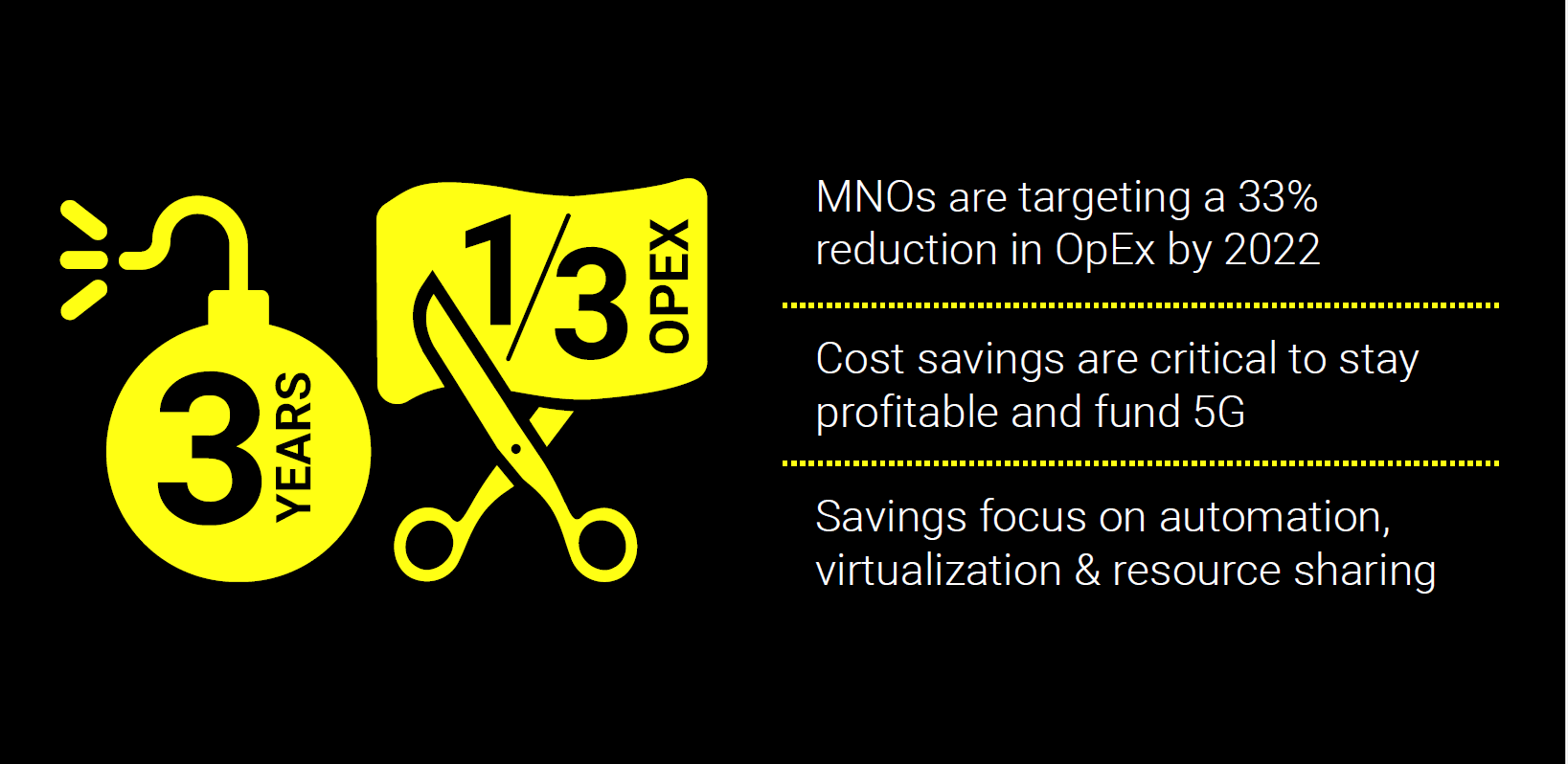Can automated operations save the day?

Telecom Catch-22: Necessary long-term 5G investments undermine short-term profitability. Can automated operations save the day?
Mobile network operators (MNOs) are between a rock and a hard place involving near-term and long-term profitability.
On the one hand, they struggle with high OpEx required to maintain the status quo: the mobile telecom market is mature or saturated in most regions, profits are in the single digits, and user experience (the main cause of churn) is difficult to optimize.
On the other hand, significant CapEx is needed to finish building out LTE in markets where that is not yet complete, and to create an entirely new ecosystem for 5G to make the next generation of mobile sustainable in the long term.
In the face of all this, MNOs have concluded the only way to get the numbers to work is reducing OpEx 33% by 2022. But these cuts are only possible by rapidly incorporating automation (AI, machine learning) across the entire organization, especially operations. With this goal front and center, 90% of mobile operators plan to automate service assurance and its integration with support systems within 18 months (Ovum, August 2019). Without automation, cutting OpEx will create a death spiral by making it impossible to manage and maintain networks and keep customers happy.
Automation is not easy, though, especially applied in an organization-wide manner that can really make a big difference. This no doubt accounts for the fact that 77% of telecom operator spend is OpEx, yet only 1% is being spent on automation that could significantly reduce OpEx. (Appledore, April 2019)
Figuring out how to effectively implement automation will pay off with short-term and long-term benefits—and operators know it. More than 60% of MNOs say their primary driver for using AI in operations is reducing OpEx using automation and closed-loop systems. (TM Forum, December 2019.) And, the majority of OpEx savings expected from 5G rely on automation and AI. (Analysys Mason, January 2019.).
The good news is that operators are already achieving incremental business goal successes as they move toward automation. For example, Telenor's network as digital infrastructure initiative yielded 40% reduction in network and operational costs, and Turkcell achieved 10% core network OpEx savings and containment through unified NFVI (TMF, March 2019).
Realizing these gains relies on an effective service assurance automation platform that delivers the right data, at the right time, in context. This is an emerging area of innovation to watch over the coming months as operators and vendors try to make automation itself more open and efficient.
Among telco service providers already successfully using AI, 16% have done so to achieve OpEx savings. That number is very likely to increase quickly over the next couple of years as the ‘deadline’ to cut OpEx by 33% approaches
